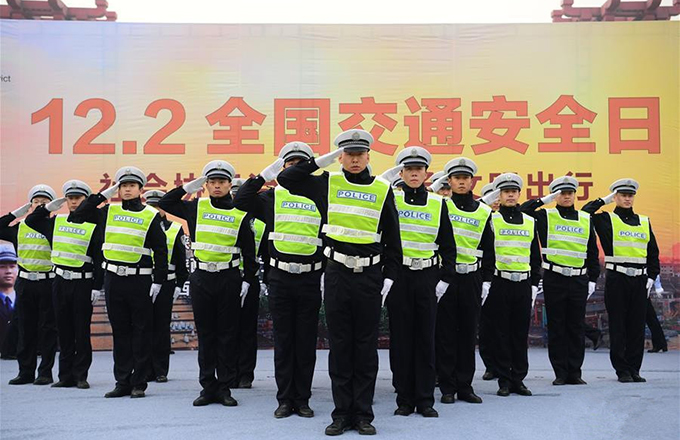Spring city becomes hub for Belt and Road
This past week I found myself in Kunming, Yunnan Province, one of the future hubs of the One Belt, One Road Initiative.While many people are skeptical that OBOR can help to bring prosperity and trade to South East Asia and beyond, from what I have seen in the development of Yunnan Province over less than a decade, if extended repeated elsewhere in South East Asia, it would bring enormous similar benefits.
The last time I visited Yunnan, in 2009, it was a significantly under-developed region, suffering from drought and the effects of a bizarre Pu’er tea speculative mania and subsequent collapse in tea prices. I was seeking an understanding of the area’s economic and social development,visiting other well-known places such as Dali and Lijiang, and many small villages as I traveled by bus over bumpy roads and frightening mountain passes. A number of places I visited weren’t even electrified at the time, and many of the rural people I met on my travels throughout the province seemed to have been left behind from the prosperity of China’s east.
Today, Yunnan is one of the richest agricultural areas of China, supplying a large proportion of the world’s fresh cut flowers, as well as significant volumes offruits, tobacco, and other crops. The traditional Pu’er tea regions has been supplemented and diversified to include high-quality coffee bean production used by global companies such as Starbucks, which built plantations there and helped modernize agricultural practices for the predominantly ethnic minority farmers.
Far from being energy deficient, the region has become a hydro-electric leader in China and globally, added large solar farms to take advantage of Yunnan’s clear skies and high annual sun exposure, and just opened an oil pipeline through Myanmar, shortening the distance oil previously had to travel by sea.
When I visited the city of Kunming in 2009, it was one big construction site as I recall, inconvenient to get around and lacking good transportation infrastructure. I remember vividly the noise of construction and the dust in the air, and many incomplete projects.
Kunmingtoday has several metro lines, the huge Changshui International Airport, handling about 40 million travelers a year, plus a new high-speed rail line connecting it to the highly populated and prosperous Shanghai -- and many other places in between -- by one of the longest high-speed rail lines in the world at 2,266 kilometers.
On my recent visit, I noted that in less than a decade, Kunming had become a modern city, with culture, tourist attractions and international hotels, office towers, shopping malls, and more. Its people seemed to enjoy jogging and other sports suitable to the climate, bringing to mind a people content with quality of life.
What a positive change this all was, and it gave me some idea of where the city’s future growth would come from. Yunnan’s proximity to Vietnam, Laos, Myanmar, Cambodia, Thailand, Malaysia and Singapore, makes it China’s gateway to South East Asia, and Kunming, as the province’s central city, will be the hub between SEA and the rest of China.
Just how important is this hub and gateway? The recently compiled Big Data Report of Trade Cooperation under the Belt and Road Initiative shows that the two-way trade between China and countries along the OBOR routes was more than US$953 billion in 2016, and South East Asia overall had the biggest share of imports and exports, with Vietnam as the single biggest beneficiary thus far.
After my recent visit and seeing the advanced transportation infrastructure that had been built, I can see clearly the potential of the future high-speed rail links between Kunming and the major cities of South East Asia, to bring additional two-way development to other countries in SEA as transportation infrastructure improves and trade becomes faster and easier. And, imagine one day being able to travel all the way from Shanghai to Singapore by a single-non-stop high-speed rail train transiting Kunming. That is just one of the amazing routes that could happen when One Belt, One Road progresses.
However, with the Belt and Road Forumfor International Cooperation coming up in Beijing in May, many people are wondering how OBOR will deliver. When it comes to the potential of HSR to benefit other countries, naysayers point out that aside from the Shanghai-Beijing HSR line, most of China’s HSR lines do not make money. My belief is that if other economic benefits, such as time savings productivity increases and convenient access to and from previously isolated areas, are included, the HSR is providing enormous, yet hard to quantify, economic returns already.
I for one am glad that China has invested so much in a HSR network that is now the world’s longest and fastest. When extended to other countries via OBOR, it will bring benefits to them domestically as well as internationally by connecting them to China and the other OBOR participants.
Kunming is known as the city of spring, a hopeful name full of promise for the future of the Belt and Road Initiative. When considering the question Yunnan is also home to Shangri-La, both a real town as well as a fictional place in the novel Lost Horizon by James Hilton. He describedShangri-Laas a mythical utopia that is happy yet isolated, its beauty and harmony only available to a scant few lucky enough to find it in the mountains. It is so idyllic that people don’t want to leave.
While some might long for the latter as an attempt to hang on to the past, I believe that continued prosperity of our world is not a given and, absent some form of new stimulus, this long period of slow economic recovery may continue. China has shown anew way forward with its own investment in infrastructure and its willingness now to repeat it elsewhere thereby helping other regions to develop and prosper. The path to Shangri-La is shrouded in mystery but the way to eternal spring is in the form of a belt and road.
Jason Inch is a researcher of China’s economy based in Shanghai. Contact him at jasoninch@yahoo.com
























